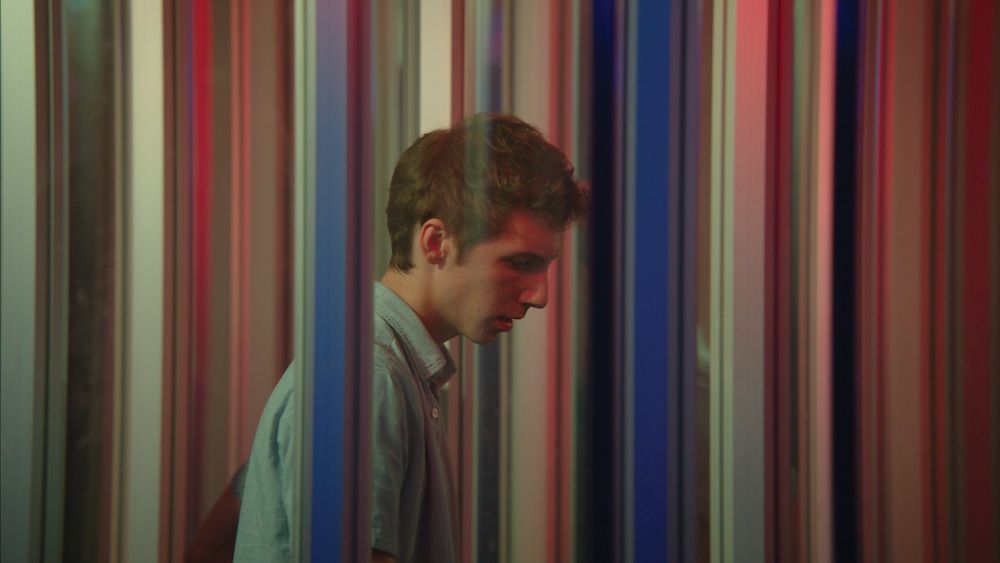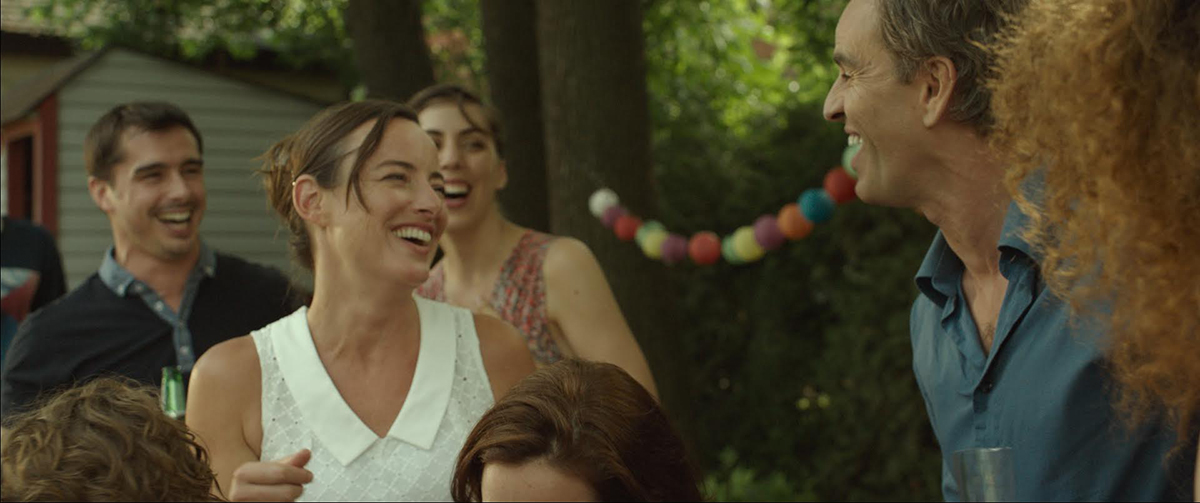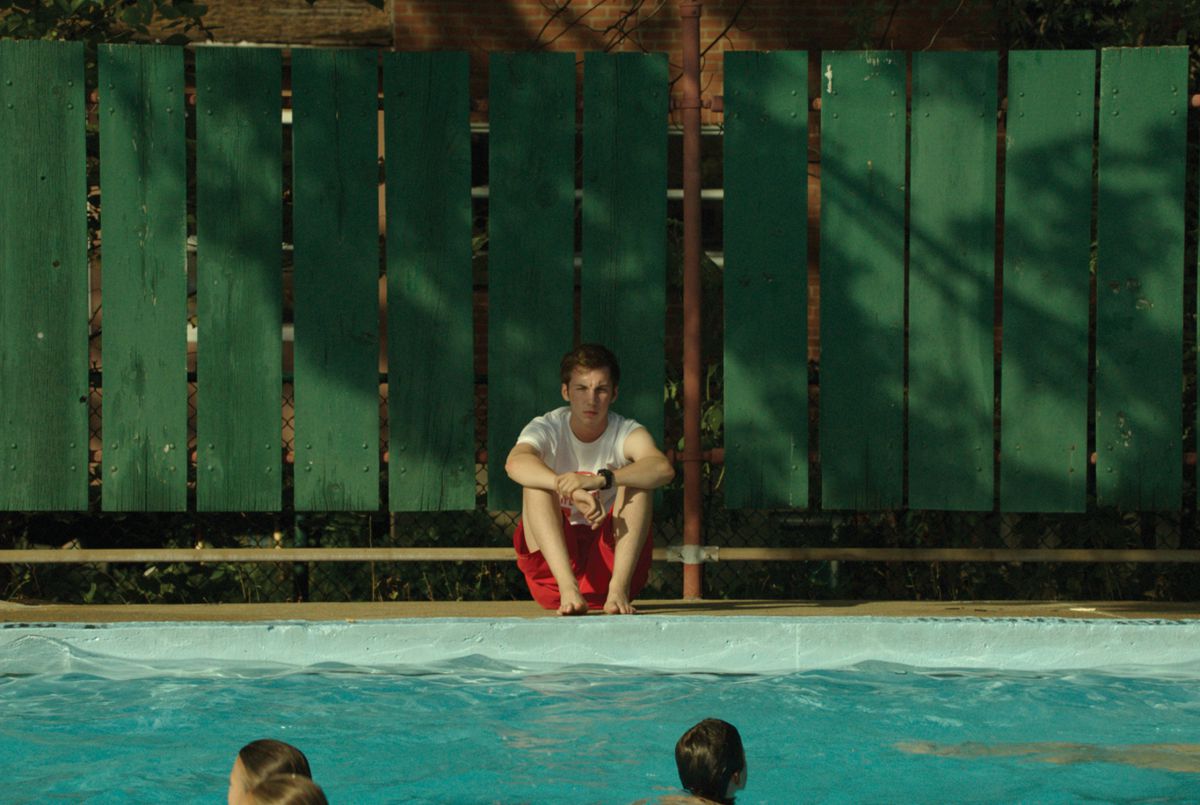Talk with the Filmmaker: “The Demons” Director Philippe Lesage on the Internal Monsters of Youth
ScreenPrism chats with director and screenwriter Philippe Lesage about his surreal ode to childhood fears, “The Demons.”
As his school year draws to a close, ten-year-old Felix must wade through a deepening pool of worry, fear and confusion. He must deal with his huge crush on his gym teacher, Rebecca. His older brother’s friend spooks him with stories about little boys being kidnapped, assaulted and killed. He thinks his father is having an affair with his best friend’s alluring mother. He knows he’s too old to be scared of the dark and of scary movies, but alas.
Based on similar experiences from writer-director Philippe Lesage’s childhood, The Demons (2015) presents Felix’s almost carefree existence teetering between childhood and teenage-dom, interrupted by the stories of kidnappings that start to rupture the veneer of his idyllic, sleepy town. There are no fantastical, supernatural, monsters in closets in this film. The monsters come in the lurking shadows of things that Felix cannot understand: natural tensions between the sexes; weird urges towards those of the same gender; the quiet, mindless exchanges between two tired adults; and conversations that are off-limits for a youngin’ like him.
ScreenPrism: Before The Demons and Copenhauge: A Love Story, you’ve mostly made documentaries. Did documentary influence your approach to directing The Demons?
Philippe Lesage: [The Demons] is my first fiction film to be released; Copenhauge hasn’t been released yet. Yes, I come from a documentary background, but I always wanted to move towards fiction. One thing that I wanted to do with this first fiction film was write about my childhood. It’s pretty much inspired by me as a kid, actually. There is an introspective aspect to this film, and I thought it was interesting to show childhood [in a way] that we normally don’t see. Of course, [the film is] about children’s fears, but I think the core of the film is about kids who are discovering a sexual world [through] the adults around him, during which he is approaching teenage-hood, in a moment when he starts to explore his own sexuality. So this creates a fear. This is a scary thing because he doesn’t know everything. But, of course, this is a curious aspect of human life: to discover. For instance, he thinks his dad is cheating on his mom in the film, and he’s also asking questions about his own sexual orientation. He starts to feel guilt and empathy for others. The lifeguard character [on the other hand] is a child who hasn’t grown up. He doesn’t have empathy that Felix is slowly getting.

The Demons (2015)
SP: Later in the film, Ben’s predatory nature comes into focus. Is Ben supposed to be an anti-hero or Felix’s foil?
PL: I thought it was interesting that Felix has imaginary fears, but there’s a real threat around him – and in terms of my own fears as a child, because, when I was about Felix’s age, there was a wave of kids my age being kidnapped, and that was really scary. So in a way it became very real, these certain stories you kept hearing about kids my own age disappearing. I wanted to give [the fear that I had] some kind of reality.
As a filmmaker, to be honest, I’m bored when I watch films these days, because most times films are filmed and structured the same way. You don’t often get surprised. There’s something very conventional about films now, and I’m unsatisfied in a way. I wanted to break convention by twisting the structure of my film. In a way, I wanted to kidnap the viewer, to make them feel very bad for 15 minutes, like a rock in his shoe, you know? But it’s not just that way for no reason. It’s key through character that you represent that children can be very cruel and abusive, but that’s normal. To punish them for that and to send them to prison for being children – these characters I created: the lifeguard Ben, I felt is a victim of his own faults. Unlike Felix, [Ben] didn’t develop empathy, and he is cruel in a way kids are, but [he is like] a very egocentric child who didn’t learn to get rid of his own dark emotions.
Also, I read an article recently in the New Yorker which was about children being sentenced because they were doing things that my own characters were doing – like Felix was doing in the bedroom, these sexual games that all kids do – I read an article that these kids are being punished. It really freaked me out. We don’t send kids to prison in Canada, and they’re kids, playing doctor. Just stay away from that as adults; you’re going to fuck them up much more by putting them in jail and ruining their life.
I wanted to do a very crude and bold picture of childhood that we don’t normally see, where they’re hiding the darker stuff. Sometimes they do behave [awfully], and then they learn how to act like everyone. They’re not perfect. They’re not pure angels all the time. As adults, we have to encourage their empathy, but I don’t think we should do that harsh punishment. That’s not the [main] story [of The Demons], but it’s a portrait about [childhood discovery]. Also, often in films they shoot [personal] demons as supernatural. They use more fantasy to give life to the monster in the closet, but I wanted to do something very based in reality – in our reality of things.
SP: The movie isn’t necessarily set in modern day. It’s set in pre-Internet time, which decreases the access kids have to information. How did you develop the atmosphere?
PL: I didn’t want to do a period film [set] in the ‘80s. But I wanted to make a lot of references to the ‘80s, to create a timeless atmosphere, especially in the pre-Internet period. But we don’t really know. I think that it could be set now. It could happen now. But I wanted to avoid references to iPhones or the Internet because I think not only that technology is ruining our lives but also ruining the magic in films. When we look back, it’s going to look so stupid and age very badly; it’s killing the magic.
I’m not claiming that I’m filming realistic films – I’m trying to do impressionistic films, which is very different. There’s something very naturalistic in my movie, in terms of psychology and the scenes and trying to find the spectacular in a human being. But a good film, for me, is a powerful, atmospheric film, not something that we see that often. Since I am the director, I can create that atmosphere. To set it right now, the kids would deal with all this access to information and technology, and it would ruin something romantic and magical.

The Demons (2015)
SP: Both the opening and closing scenes, with their crescendo-ing music, they’re very nostalgic and romantic.
PL: Yes, I also am mixing music from now with music back then: classical music and pop hits from the ‘60s, like “Pata Pata” [by Miriam Makeba]. I don’t know if it was popular in the US, but [the song] was very popular in Europe in the ‘60s or ‘70s. [I mixed] these different times.
In terms of costume design, I was also looking for things that look like ‘90s, or ‘80s, or 2000s, the type of clothes from a period that doesn’t age that much. A striped shirt will be something that kids will always be wearing. I wanted to use a lot of primary colors in general, colors of childhood: red, blue, yellow. [The film is] colorful, even though the film comes back to darker subjects; there’s a contrast between the hidden violence of the horror present in the film, under the bright lights of the sun. The film distracts from the darker elements, like the bright relationship of the siblings, which is a nice touch, I think.
SP: What was your process for choosing the music?
PL: There is an original soundtrack by an Englishman called Pye, an English musician, based in London. He’s never done a soundtrack before, but by chance I found a record of his in a record store. It reminded me of the music from the ‘80s: the electronic music, with synthesizers, the guys I really liked and listened to when I was 10. But it was also modern, so I got back to him and said I was interested in him doing our soundtrack. He said yes. We started very early. He started sending tracks without the film even finished and without having seen this film. He was sending out these tracks, and these tracks were also inspiring to me.
So instead of doing what we do normally – by scoring the film after it’s done – we did it the other way around. I prefer that because I like to choose music before. Like the opening song, it was a song called “St. Matthew Passion.” I wanted that song to be at the beginning of the film from day one. I also listen to music while I’m writing a script. Music is quite important. I always write with music. You can discover new stuff. I don’t believe in guiding the audience too much, giving them intention, “Here you have to be sad. Here you have to be scared.” Instead of guiding the emotion of the viewer, I like to give them a break. I like to have the viewer create and be contemplative. I say this, but I also cheat in this film: when the kid, Patrick, who is kidnapped, when Felix imagines [Patrick’s] ghost, and the end, when Felix discovers the body, I use tense music. I break the rule, but just a little.
SP: The cinematography is gorgeous, with many wide and long shots. One of my favorite scenes in The Demons is when the parents get into a fight and the camera follows the fight around the entire house. Can you explain why you chose to shoot in this way?
PL: I like long shots for many reasons. They allow the actors to be very free, and in order for them to be extremely natural – and since I was working with kids – I didn’t want to guide them too much, with following marks on the floor, following the camera and the lights. The wide shot could move anywhere it wanted. Also, [there is] choreography that is intentional in terms of the natural movement of things, instead of precise movements. Sometimes things [on film] look frozen. [Characters] don’t look like humans, they’re not moving. I like to see real movement, like people getting in the frame, getting out of frame. Sometimes the person stops and you don’t see his head, and then he bends down and you see his head. It gives the impression that life is there and moves very naturally: kids playing in the pool, in the schoolyard, in the way kids play. You get a sense of their reality. That’s really what I look for.
The word “authentic” is what I’m always thinking of when I do a film. I want it to be authentic. I want people to forget that they’re watching a film, even if you sometimes have to remind them they’re watching a film. Also, for this particular film, since I’m building a very slow-paced tension, the rhythm gets stuck. The long shots and wide shots help create that tension. For instance, when the kids are in the locker room – it’s an unbearable thing to watch – but the way one kid goes into a locker first, like it’s a game, it’s a very real and authentic feel there, as if you were there, watching them. If you don’t cut, [a scene] has greater intention. There’s a lot of things I don’t do because I am reacting against [convention], and I am also reacting against cutting too much. The world is going too fast so I don’t want to cut if I don’t need to cut. [The film] is stronger [that way].

The Demons (2015)
SP: What was your favorite scene to film and favorite scene to watch?
PL: [laughs] I hate to choose, but this is a hard question because the thing is – I remember, on other films, I would spend 3 days just waiting, being patient, for something to happen. I never felt that way in this film. Every day, there was always something that made the day great. I got that feeling “We did it! It’s working!” and I didn’t cut that many scenes from the film. Usually, the number of scenes cut from the film is very high. I think I cut only one scene, and it wasn’t even in the original screenplay.
This is a very difficult question because I remember that there were a lot of times coming home and I’m very happy. The locker scene, it’s a good scene, but it was a difficult scene, and we did 40 takes. But I’m very happy when the actors are able to go beyond their own selves, and you can feel that they’re reaching something that you didn’t think they would be able to reach. For instance – in one of the most difficult scenes in the film – I was very satisfied with the acting in the scene where the lifeguard, Ben, has Patrick in the car, just before they go for the treasure hunt. For me, I was happy that night because we were shot through the whole night, and we were working with this young kid as well. [Pier-Luc Funk, who plays the lifeguard] was so good. He’s a comedian, this guy. He has very little experience in dramatic acing. He’s a comedian on TV shows, he’s a very hilarious funny guy. [The role] was very challenging for him, and it was a risk for him to take such a role, but their acting that night, I liked it very much. It was very satisfying.
I also liked the pool scene – which was shot with piano music – where the lifeguard was teaching his class. Also the moment where [Felix] throws the love letter [to his teacher] out the window and has to go downstairs to fetch it. And the scene where Felix dances with his brother and sister. Because I’ve seen this movie so many times, I don’t go to see it in the festival because, at some point, I’ve watched this 200 times, but I appreciate all the times whenever the music is there. I really still enjoy those scenes.

